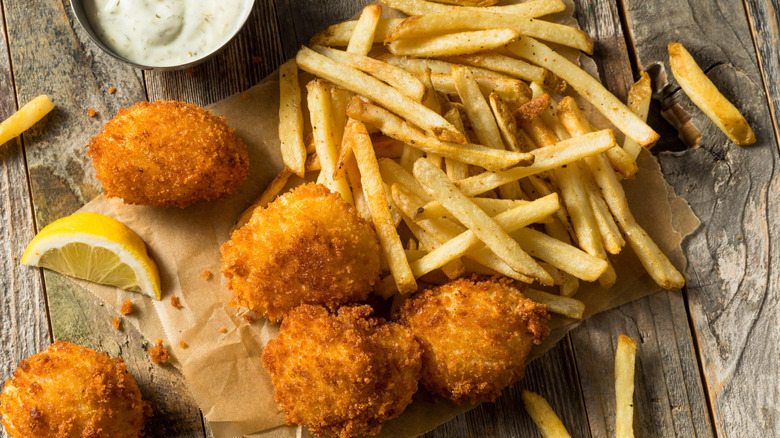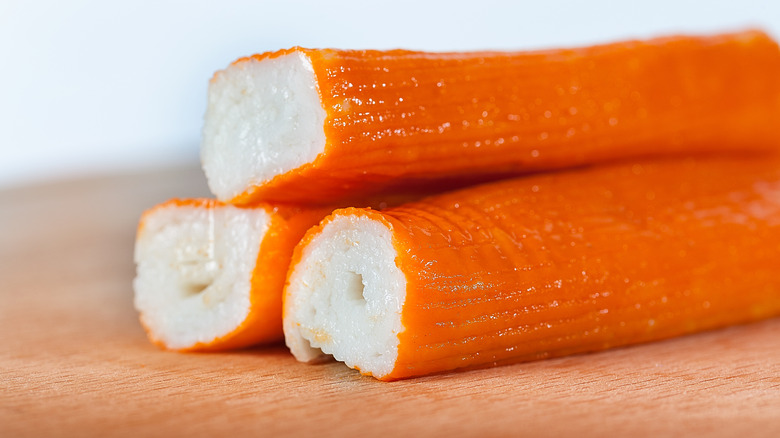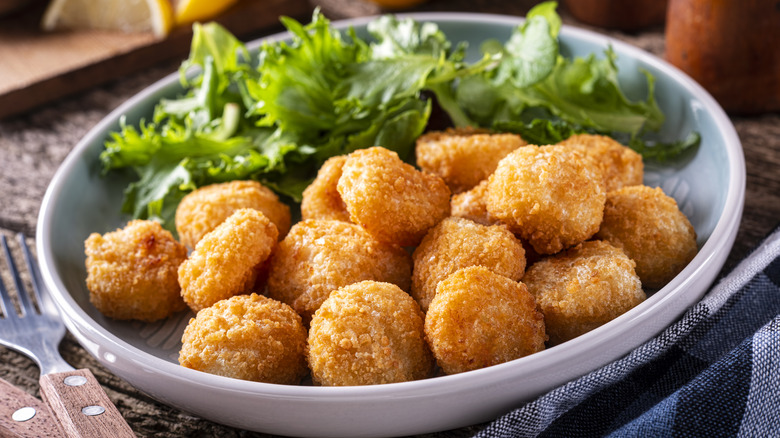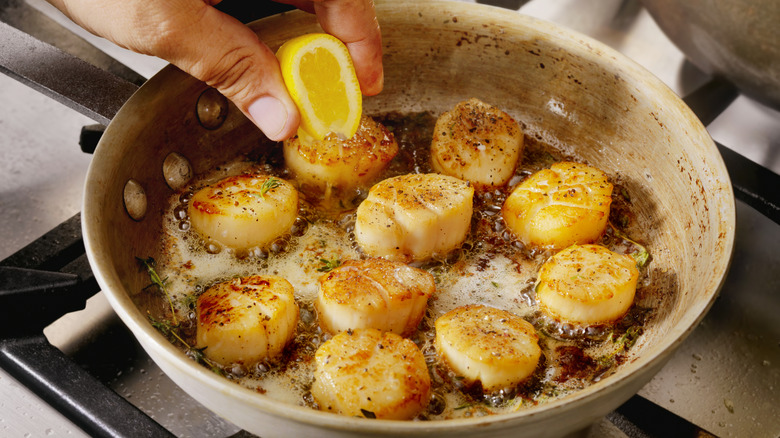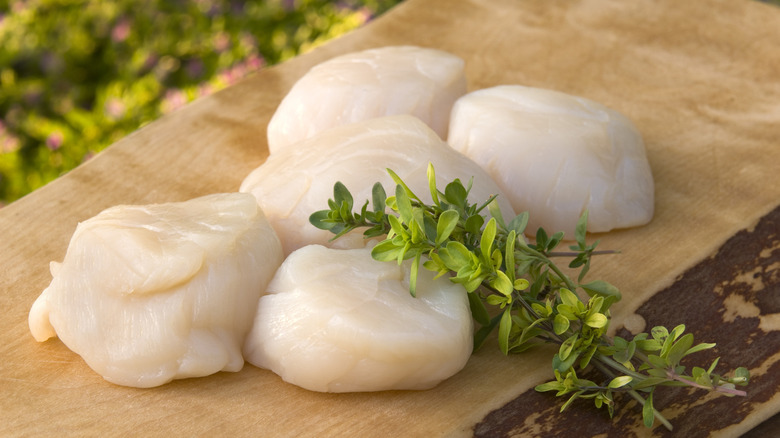How To Tell Real Scallops From Fake Ones
Scallops are a true seafood gem. They're tender, sweet, and a real joy no matter how you prepare them. (I'm a big fan of them raw.) Unfortunately, their luxury can cause them to be pretty pricey, which of course makes them seem as if they'd be wide open to counterfeiting efforts.
In 2022, "Inside Edition" released a video about seafood places selling imitation scallops, and the TV show makes it seem like this practice is an epidemic. And, despite seafood fraud being a real issue, I'm calling bullshit.
The "Inside Edition" piece found multiple restaurants serving deep fried scallops and sent them into a lab for testing. The show discovered that the scallops they had sampled didn't contain scallops at all, and the expert interviewed suggested the material that the imitation scallops were made of was actually surimi, or fish paste, which is made of pollock or whiting.
Now, I'm absolutely not saying that imitation scallop doesn't exist. In fact, I've even found some sold through Hmart (via a Korean brand). Real scallops cost quite a bit; for example, online retailer Maine Lobster Now sells them for $79.99 per pound. So they are obviously not a daily treat unless you're Jeff Bezos.
What is surimi used for?
First of all, though "Inside Edition" trash talks surimi for being "fish goo" in an attempt to sensationalize the ingredient, it's something you've likely eaten. If you're a fan of California rolls, the imitation crab within them is, in fact, made of surimi. The fish it's commonly made of, pollock, is the same fish McDonald's uses in its classic sandwich, the Filet-O-Fish. I assure you, it's not garbage.
Fish balls, which are a very popular ingredient in Asian cooking for soups and snacks, are often made of surimi and a starch binder. In my opinion, trying to insult a useful and globally beloved ingredient is actually pretty low.
How to tell the difference between scallops and surimi
The difference in a scallop versus surimi is pretty stark, frankly. First off, one clue is in its preparation. You won't see diver scallops (which are the giant ones) deep fried very often, because cooking them in that manner makes them rubbery and unappealing. Why wreck a perfectly fancy ingredient that way, you know? And how often have you seen deep fried diver scallops on a menu, when you think about it?
Bay scallops, the cute tiny ones, are going to be the ones you see breaded and deep fried more often. They make a great poppable snack or side at a seafood stand.
Second of all, surimi has a very distinct uniform texture. It's springy, spongy, and isn't fibrous at all since it's essentially a fine paste that's been shaped and cooked. It's unmistakable because of this texture. I understand that people who have less experience with seafood might not know the difference unless shown side by side, however. Scallops have a vertical fibrous grain that easily splits apart and can be visible if you examine a piece closely.
How scallops look and taste
Scallops are all different shapes and sizes. They are graded by how many it takes of a certain size to total one pound, meaning the less per pound, the more valuable they are since they're bigger. But that's also the thing: Scallops are all irregularly shaped. None of them are shaped the same way, so if you get a basket full of uniformly shaped rounds, examine them carefully as you eat them.
Further, scallops have a sweet and delicate flavor. Surimi tends not to have much flavor to it, which is why flavor additives are often used to supplement its taste. Deep frying a scallop would obliterate its attractive culinary qualities, which is essentially insulting such a wonderful ingredient that performs better with a quick sear in a pan with some butter.
It's doubtful the sale of fake scallops is a widespread issue
"Inside Edition" did hire a somewhat dubious expert, Dr. David Friedman, who explains some of this stuff in the video. (I call him dubious because he sells "all-natural" weight loss supplements on his website, which doesn't bode well for me, personally.)
So like I said, imitation scallops are an actual product, this fact is not in contention. I can also see why a bad business owner would want to pass off a much cheaper ingredient as a luxury food, because they stand to make a crap ton of money off of it. But whether this is as widespread an occurrence as "Inside Edition" blatantly suggests it is, I seriously doubt it. But do yourself a favor: If you see deep fried diver scallops on a menu, skip them. There are better ways to eat them.
